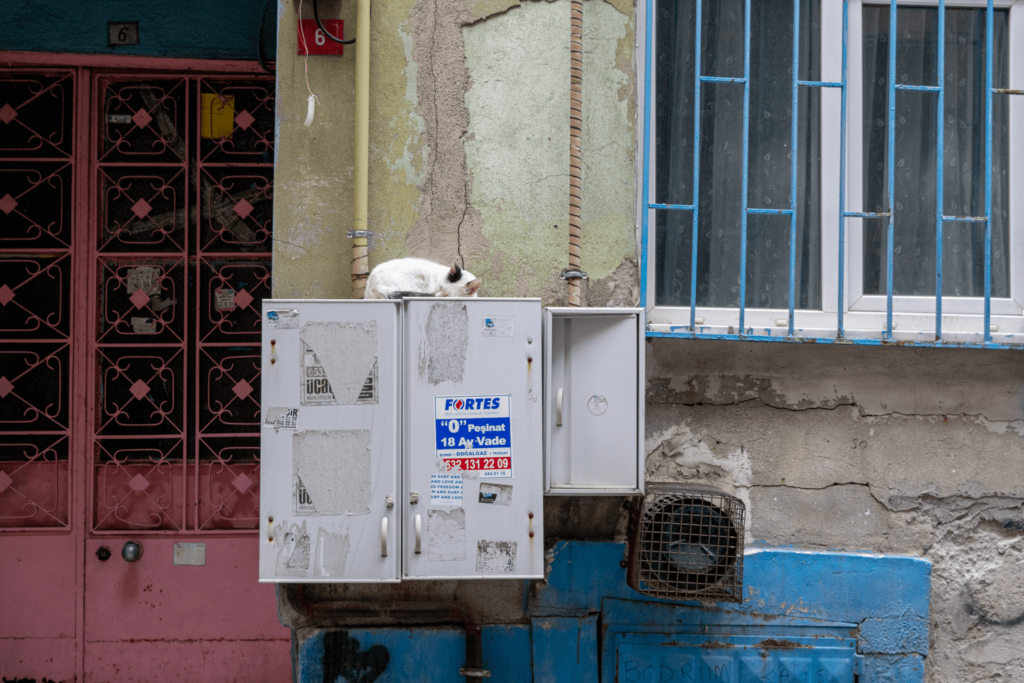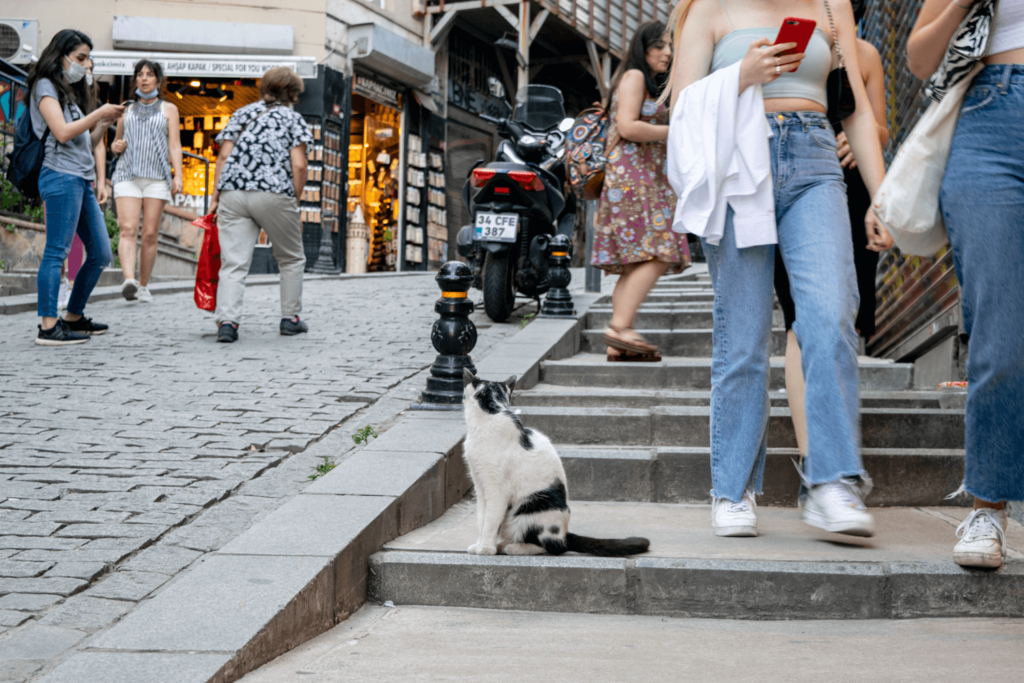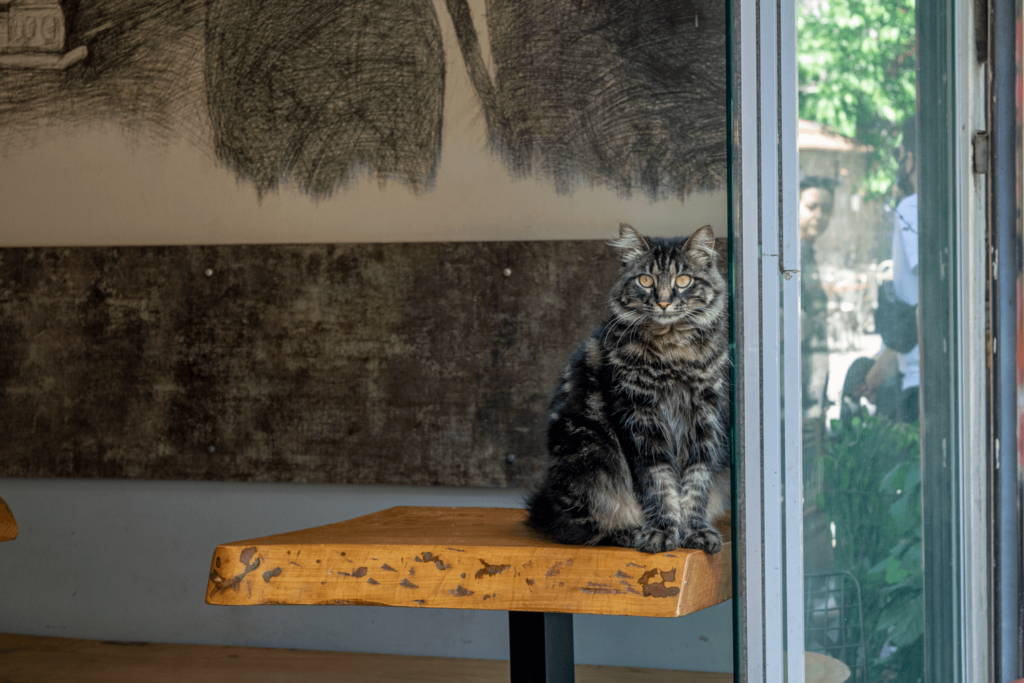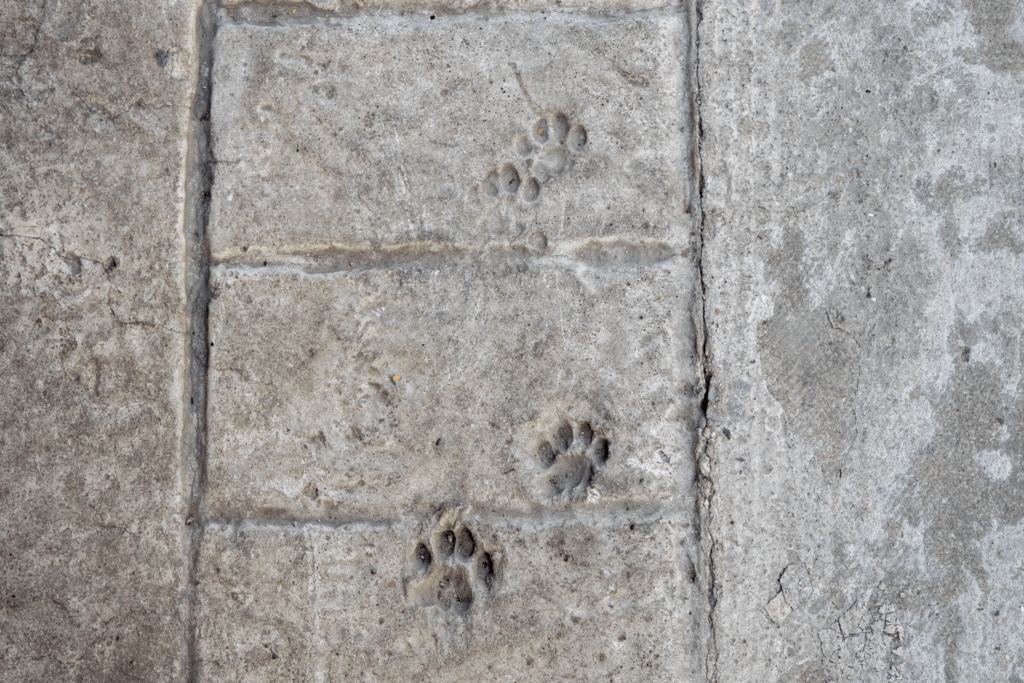Minik and Arthur were playing with the nazar beads hanging from my bag. I’d just come home after spending five hours working at a coffee shop in Kadikoy, so I immediately buried my nose in Arthur’s fur, releasing a day’s worth of stress. To get on the cats’ good side, I always came home bearing gifts: shiny bracelets, hair ties and bead necklaces that would be fun to play with. Minik cut the sting with his sharp claws, and the beads scattered around the living room — the cats were ecstatic, jumping back and forth and running into each other as they tried to catch the blue eye beads.



In March 2020, the fragile string that tied the world together was cut, too. The beads started flying in all directions: some countries shut down their borders and never reopened while others put stringent travel restrictions in place. Early in the pandemic, I was studying abroad in London, clueless as to what lay ahead of me: scrambling to leave the UK three hours before all the air travel ceased, seeing the Russian police hovering over my bed to make sure I was still in quarantine, moving back into my childhood bedroom, and finally, embarking on a gap year full of adventure and blissful uncertainty, which gave me the opportunity to do whatever I wanted. For the first time in my life, I was no longer a student, nor did I belong to any official institution — a full-time job, for instance — that could define me. So, who was I? At first, my newfound liberation put me in a state of Nietzschian horror: once I demolished the land behind me, I felt homesick and wondered if my former labels had offered more freedom. But as the months went by, I started to explore the boundaries of my new world, navigating between two remote jobs and making my way through Russia. Once the borders slowly started to open up, I felt that it was time to reignite my love affair with the world, so I packed my bags and booked an impromptu trip to Turkey.




The plane landed in one of Istanbul’s heaviest snow storms of the decade, but it only made the city seem even more magical. Ancient mosques powdered with snow, brazen wind swaying seagulls over the Bosporus, Turkish coffee and steamy kunefe on a cold crisp morning, icy cobblestones that Hurrem Sultan was once pacing on the way to her Topkapi chambers… But what captivated me most were the stray cats. There were thousands of them — basking in the winter sun and sleeping on every possible surface, wandering around the narrow streets of Beyoğlu and jumping on the rooftops of ancient buildings in Fatih, frequenting overpriced restaurants and local delis, scamming tourists for free food. Living their lives in the city that treated them as equals to humans. In my one week in Istanbul, I took hundreds of photos of cats, and remembered one last label I’d involuntarily shed during the pandemic…a photographer. A month later, I put my life in Russia on hold and flew back to Istanbul to document the lives of the cats and their unique place within Turkish culture.




I soon learned that cats originated 10,000 years ago in what is now modern-day Turkey and became key historical figures in both East and West. At the beginning of the 11th century, Christianity declared cats harmful creatures possessed by the devil, who in turn looked at the world through feline eyes. As a result, thousands of cats across Europe were burnt alive, and the number of rats multiplied, leading to a series of deadly plague outbreaks. Unlike in Europe, where street cats are treated as pests to this day, cats in Byzantium (modern Istanbul) were viewed as sacred animals. The prophet Muhammad allowed a cat to give birth on his cloak, and even cut off the sleeve of his prayer robe just so he wouldn’t disturb his pet cat in her sleep. Another cat is believed to have saved the prophet from a deadly snake. In return, Muhammad blessed cats with the ability to always land on their feet. The animals became an integral part of Islamic culture and entered a special relationship with the city of Istanbul itself, which is now home to hundreds of thousands stray cats. Turkish people worship the cats, caring for them at home and in the streets; in my three months in Turkey, I have never seen a car without a bag of cat food stashed in the trunk. Although beaten down by life, burdened by poverty and political uncertainty, a Turkish person would not think twice before spending their last lira to take a street cat with a broken paw to the vet.










Restaurant owners feed the neighborhood cats with top chef meals and fishermen share their catch with their four-legged companions. Cats are welcome in local delis and five-star hotels, private residences and public parks, ferries and buses, trendy coffee shops and ancient mosques alike. In return for Turkish people’s gratuitous excessive love, cats have taken to protecting them from deadly plagues and enriched their lives with a sense of kindness and affection. I still remember walking into a coffeeshop in Kadikoy, paralyzed with anxiety over a work task I couldn’t complete — and a few moments later, five kittens rolled over from underneath a table, landing not far from my feet. Just like humans, each cat has their own personality. So, while the three kittens quickly ran back to their mother, the other two didn’t see any problem playing with a complete stranger. After ten minutes of meowing, ear scratching and chasing, my anxiety was gone and I felt grounded once again. I could resume working, taking frequent breaks between the tasks to pet my newfound friends and give them treats.




Photography is the only way I could come closer to documenting the unique equilibrium between humans and felines that exists on the streets of Istanbul. During my time in Turkey, I was living on the Asian side of the city, in Kadikoy, so naturally my project began there — in quiet residential neighborhoods with colorful laundry hanging out of the windows and hundreds of cats living peacefully alongside humans in their kitty houses, apartment buildings, basements, shops and various other constructions. As I made my way through Istanbul, my project followed me to the busy streets of Galata and Eminönü, where cats were much harder to find: ubiquitous tourists, screaming vendors and bustling markets wreaked havoc on the streets, forcing felines to retreat to the quieter courtyards in search of a place to rest, so I had to spend hours searching for their hideouts.






As a fashion photographer, I was used to telling my models what to do and where to stand, so this project became a creative and physical challenge. However graceful, cats are no models — I still remember the feeling of disappointment when I found a gorgeous cat sleeping in a pile of oriental rugs and the animal escaped before I even had a chance to press the shutter button. When the cats did stay in their place, I would still have to bend over in every direction trying to get a nice shot, from balancing on fragile fences to squatting on the rocks and laying on the muddy ground. Even though in Istanbul, cats and humans live on the same wavelength, they do not share the same geometrical plane, and I learned this lesson through the sharp pain shooting down my back after each day of photographing.

The strenuous shooting process made me stronger and more patient. Outside of a sterile photo studio, in constantly changing surroundings, I needed to adapt quickly and reimagine my entire photography practice. First, I had to learn how to communicate with strangers whenever I wanted to snap their photo — so I mastered the subtle art of pointing at my camera, pointing at the cat and then smiling, since the stranger and I rarely shared the same spoken language. Then I had to get over the default ‘beauty filter’ that existed in my head back when I was doing fashion and travel photography. Istanbul is a magnificent city precisely because it’s imperfect, messy, even run down at times, so I accepted the fact that not all photos will match my clean aesthetic and that beauty can take many forms.

Finally, I learned that second chances were rare and resolved to pursue opportunities as they arose. Previously, I would always take thousands of photos in an hour just to make sure I had the right angle or camera setting, but with this project, I usually had a minute or two before the cat moved or the passersby ruined the shot. Since I would never get a second chance at any of my photos, I had to go with it and hope for the best. Somehow, not only did this project make me a better photographer, it also made me a better person, capable of self-reflection and mindfulness. I learned not just to enjoy the process of photography but also to live in the moment and accept the imperfections of my art and life.

This book is a tribute to the city that revived my identity as an artist and transformed my approach to photography. To my flatmates Sena and Merve, who invited me into their home and to their dinner table, surrounded me with nothing but friendship and warmth (and incredible food!), introduced me to their mother and brought a combination of Turkish passion and Nordic hygge into my life formerly defined only by crippling anxiety and constant fear of uncertainty. To Minik and Arthur — their cats that they lovingly nicknamed Aşk (Love) — who made my allergies much worse and my days much better. To all the cats of Istanbul who roamed the city as if it belonged to them alone. We made a great team.







I see this book as just the beginning of my lifelong journey to using my photography as a way to open myself up to being transformed.


